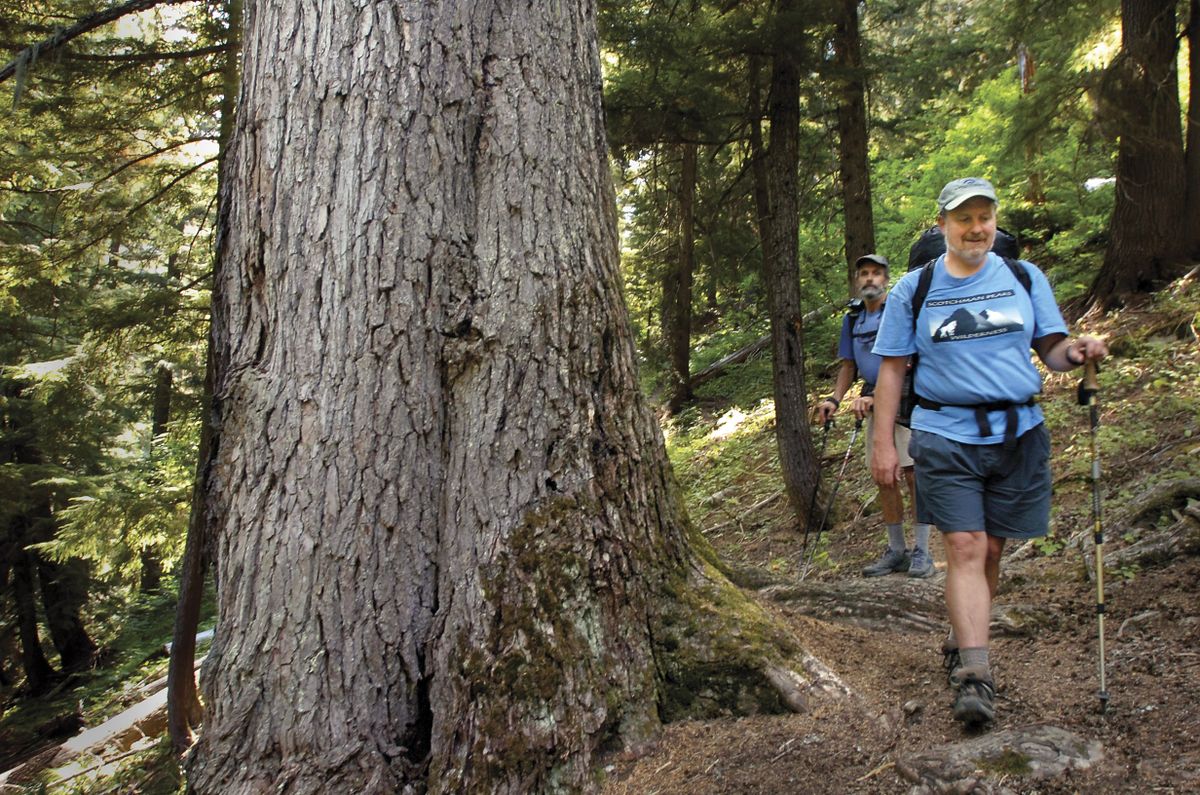Scotchman Peaks proponents making their case to locals

While some wilderness proposals championed by Idaho congressmen have moved to the front burner in Congress this month, the proposed Scotchman Peaks Wilderness northeast of Lake Pend Oreille is still in the show-and-tell stage.
“We’ve been working up from the grassroots for several years,” said Phil Hough of Sagle, chairman of the Friends of the Scotchman Peaks Wilderness (FSPW). “The future for our proposals has a lot to do with local county commissions and elections in various towns from Sandpoint to Libby.”
“That’s why we’re building local support by taking area residents out so they can see for themselves why this land is worth preserving,” he told a classroom of students at Gonzaga University.
The 88,000-acre Scotchman Peaks roadless area is a ruggedly scenic stretch of peaks and drainages with diverse flora and fauna in the western Cabinet Mountains. The area, which spans the Idaho-Montana border roughly 60 miles south of Canada, has been managed for maintaining its wilderness values since the U.S. Forest Service carried out land evaluations in the 1970s.
“During the first Roadless Area Review and Evaluation (RARE 1), the Scotchmans received 3,000 letters of support — more than any other wilderness candidate in the nation,” Hough said. “But it fell through the cracks.”
Since wilderness is land for all seasons, FSPW has begun a series of guided winter hikes in addition to a summer hike series to help the public experience the area’s wilderness attributes.
These are obvious first steps in the campaign for wilderness protection, said Hough, whose background ranges from the hotel hospitality business to hiking the nation’s premier long-distance trails — the Appalachian, Pacific Crest and Continental Divide. His father and grandfather both worked for the Forest Service.
“As the president of the local Native Plant Society, I realized that most Forest Service public meetings in this area were devoted to access and forest fire management,” he said. “The whole topic of wilderness was being ignored. Some group needed to step forward and balance the attention.”
Hough’s polish and grounding from the business world and his enthusiasm for all things wild has helped assemble a handful of dedicated and skilled Web-savvy volunteers who meet with public and agency officials, present programs to civic groups and produce an appealing newsletter. They have networked to attract more than 2,000 “friends,” Hough said.
Most of the wilderness proposals in the omnibus public lands protection bill being considered by Congress target lands within individual states.
On the other hand, the proposed Scotchman Peaks Wilderness is a rare concept that crosses state lines. “That adds more political complexities,” Hough said. “It gets even more problematic because 20,000 acres of the wilderness proposal in Montana are managed by the Idaho Panhandle National Forest while the rest in Montana is in the Kootenai National Forest.
“Our first goal is to broaden education and support,” he said.
“Wilderness is a resource with tangible assets. Natural beauty is a foundation for other economic values. For example, it protects the water quality and the scenery that are key to everything from fisheries to real estate values.”
The roadless area also is critical habitat for signature mega-fauna that define the region’s wildness: mountain goats, elk, grizzlies, wolves.
“Our biggest job is to dispel myths that still persist,” he said. “Wilderness does not close existing roads; it doesn’t limit hunting or fishing; it doesn’t curb logging.
“There are many reasons this area hasn’t been logged or open to snowmobiles already, including the steepness of the terrain and protecting the habitat for mountain goats and grizzlies.
“The Scotchman’s proposal includes no lands that are in the timber base.”
Coming to the discussion tables with maps and facts has enabled FSPW to garner support from the Bonner County Commission and some logging and motorized recreation groups, he said.
But spreading work on university campuses is equally important, he added.
College students captivated in the lowlands with their cell phones, laptop computers and other electronic gizmos are just as vulnerable to neglecting wilderness values as snowmobilers capable of pushing higher into the mountains than anyone dreamed when the last round of national forest management plans were drawn up 25 years ago.
Hough quoted President Lyndon Johnson’s words at the signing of the Wilderness Act in 1964:
“If future generations are to remember us with gratitude rather than contempt, we must leave them more than the miracles of technology. We must leave them a glimpse of the world as it was in the beginning, not just after we got through with it.”